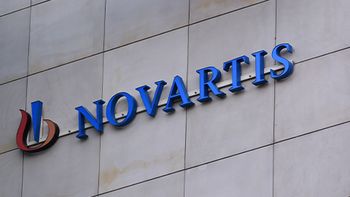
- Pharmaceutical Executive-01-17-2006
- Volume 0
- Issue 0
Understanding Demand, Not Just Supply, Key to Solving Flu Vaccine Shortages
Q&A with supply chain expert Prashant Yadav, lead investigator on a study of how to improve flu vaccine distribution.
Prashant Yadav, a professor of supply chain management at the Zaragoza Logistics Center at the University of Zaragoza in Spain, believes the influenza vaccine shortages of recent years are caused by a mismatch of supply and demand. He recently collaborated with the Massachusetts Institute of Technology Center for Transportation and Logistics to conduct a study on improving flu vaccine distribution. The report proposes several solutions for preventing vaccine shortages. PharmExec Direct conducted a short interview with Yadav to learn more about his findings.
I understand that you believe the crux of the problem with vaccine shortages is a supply and demand problem.
Most of the policy decision makers and even people in the pharmaceutical distribution sector assume that the crux of the problem is that we have too little supply. You only have two manufacturers left, so that does remain one of the key problems. But if you look at last year, which was in some sense the worst year in terms of the supply situation, at the end of the year we still had about 5 million doses in excess. So it seems like we have some distribution problems as well. Some people who wanted flu shots last year who did not get them, and at the same time we ended with doses in excess. This means those doses were not placed or distributed in the market according to where the demand was.
Can you review some of your proposed solutions for dealing with this supply/demand mismatch?
There are two types of demand. One is the elderly and the infantile -- what we call the priority demand. That is more or less predictable. Every practice knows how many people over a certain age or how many children come to them as regulars, and they know that all of those people are going to get a vaccine. The second group is normal adults, who decide whether they are going to get vaccinated primarily based on two things: how bad the previous flu season was and how far flu has spread in the current season. This demand is highly unpredictable, so most doctors end up ordering based on only the first category I mentioned.
One of our key recommendations is some kind of information portal where physicians or officer managers could look up information on how supplies are distributed geographically and then use that to redistribute. This is something the Centers for Disease Control are already working on.
Another thing that hasn’t been explored to its fullest yet, is a buyback mechanism. This could make doctors order greater quantities than they do now, because they would not fear getting stuck with excess at the end of the season. But the ability to return vaccines unconditionally could encourage doctors to over-order and send vaccine back at the end of the season. A conditional buyback, where you can return up to 50 percent of the stock that you bought initially, would incentivize physicians to do a better job forecasting demand.
Another of the suggestions in your report was giving healthcare providers, physicians, and office managers better tools to estimate the vaccines they would need. Can you elaborate a little more on what kind of tools those would be and how they would work?
This goes back to our observation that most healthcare providers buy vaccine based on gut feeling -- they have no scientific method. We suggested a system that keeps track of how many doses they ordered one year, and who they were administered to, and projects how many doses they are going to need the next year. This could be a desktop tool, which would be provided to all physicians’ offices. Every time they administer a vaccine, they would enter this information. The next year, before they start preordering from the manufacturer or from a distributor, they can use this very tool to give them recommendations.
And who would develop or manage this tool? Would it be the government, the vaccine manufactures, or some other group?
Some of the forecasting models would have to come from data CDC collects on a weekly and a monthly basis about the onset of flu, along with internal data recorded by the physician’s practices. The two need to be coupled together to create a more robust forecasting model. Each of the healthcare providers could use it, and it could be customized to their geographic region or their clientele – demographics, how many people are insured, things like that.
When thinking about flu vaccine supply chain issues, are there any other industries that can be used as a guide for physicians or manufacturers? Is there anything comparable?
There is the question of perishability in a lot of pharmaceutical products. But for flu vaccines it is more than a shelf life issue. At the end of the season, this product is of zero value, because we switch the strains after every season. So, the average yield of production is lower than you would observe in most pharmaceutical manufacturing, in fact in most manufacturing in general, because if the batch has been used, that’s all there is. At the same time, the market does not determine the price. The price is preset and the demand is uncertain.
In most markets, depending on the demand and supply situation, the market would adjust and create a price. But in flu vaccines that’s not the case. I would argue that flu vaccines are commodities. Companies use identical strains, and more or less the same manufacturing process, so the product that comes out is more or less like a commodity.
One comparison would be crops. I’m based in Spain, so I will look at Spanish olives. The market here has high yield uncertainty -- sometimes the crop completely fails, sometimes you have a bumper harvest. But for olives, the price is set by supply and demand. For some agricultural commodities, Florida oranges for example, the government comes in and looks at the supply and demand situation and sets a fair price, or at least they used to set a fair price once upon a time.
But there is not a comparable industry, because of the many different sources of uncertainty and the inability to freely set the price. We thought about what would this best compare to, or where could we benchmark this with, and we were not able to find anything that was close enough.
Articles in this issue
almost 20 years ago
FDA Encourages Exploratory Human Testingalmost 20 years ago
Pfizer Adds Radio Frequency Identification Tags to ViagraNewsletter
Lead with insight with the Pharmaceutical Executive newsletter, featuring strategic analysis, leadership trends, and market intelligence for biopharma decision-makers.




